ADDRESS AND INTERACTION WITH THE JOURNALISTS OF TIMES GROUP AT RASHTRAPATI BAHVAN
25-12-2005 : New Delhi
Media as a Partner in National Development
I am delighted to interact with the journalist of Times group on the Christmas day. My special greetings to all of you for a very happy Christmas and New Year. Today I will talk to you on the topic ?Media as a Partner in National Development?.
Our National mission - challenges
Our nation is going through a major challenge of uplifting of 260 million people who are below the poverty line and also to give better life for many millions who are on the border line of poverty or just above the poverty line. They need decent habitat, they need work with reasonable income, they need food, they need health care, and they need education and finally resulting into a good life. Our GDP is growing at more than 6% per annum on an average. Whereas, the economists suggest that to uplift the people from below the poverty line, our economy has to grow at the rate of 10% per annum consistently, for over a decade.
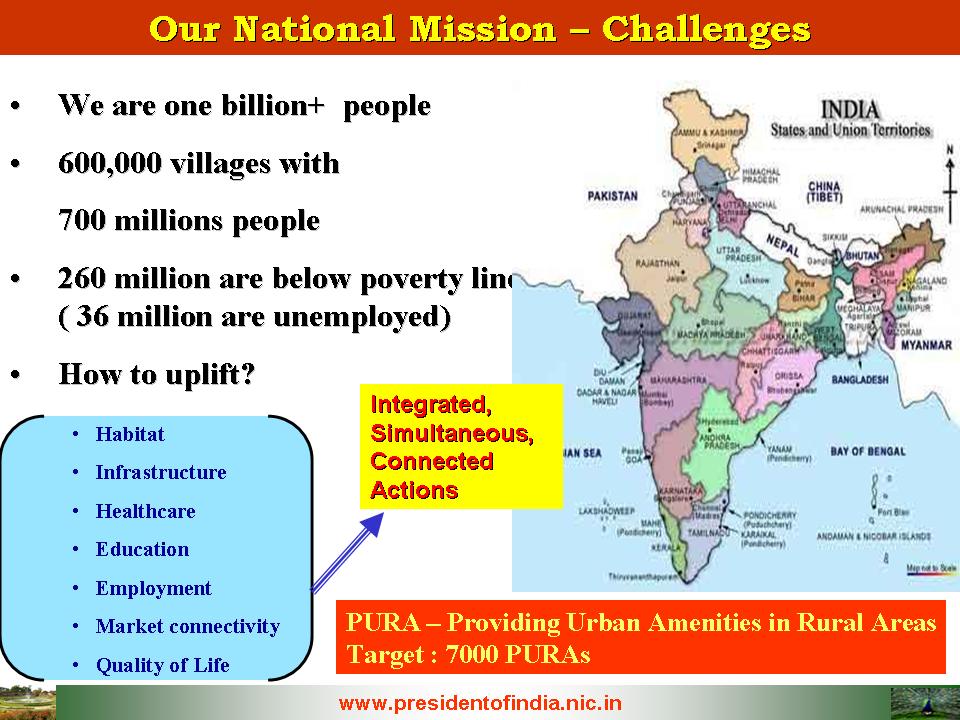
Integrated action: To meet the need of one billion people, we have the mission of transforming India into a developed nation. We have identified five areas where India has a core competence for integrated action: (1) Agriculture and food processing (2) Reliable and Quality Electric power, Surface transport and Infrastructure for all parts of the country. (3) Education and Healthcare (4) Information and Communication Technology (5) Strategic sectors. These five areas are closely inter-related and if well done would lead to national, food, economic and security.
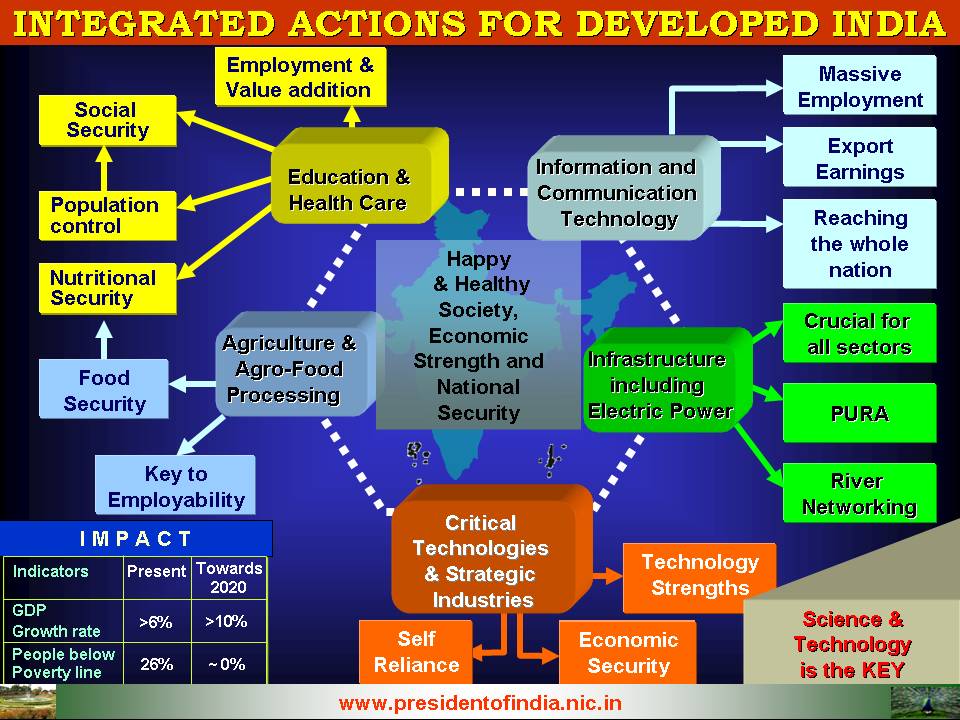
Engines for Growth: Emphasis should be on full utilization of natural and human resources of the nation to meet the demands of the modern society. We should also remember that about 50% of our population is young people with aspirations for better living. Value addition to Agriculture, Manufacturing and Service sectors, building the national core competence and technologies will lead to additional high income employment potential. The engines for growth will be accelerated by launching of the five national missions viz. water, energy, education and skills, infrastructure and employment generation that will enable achievement of 10% GDP growth rate per annum. It is possible to do so with ecological and economic sustainability.
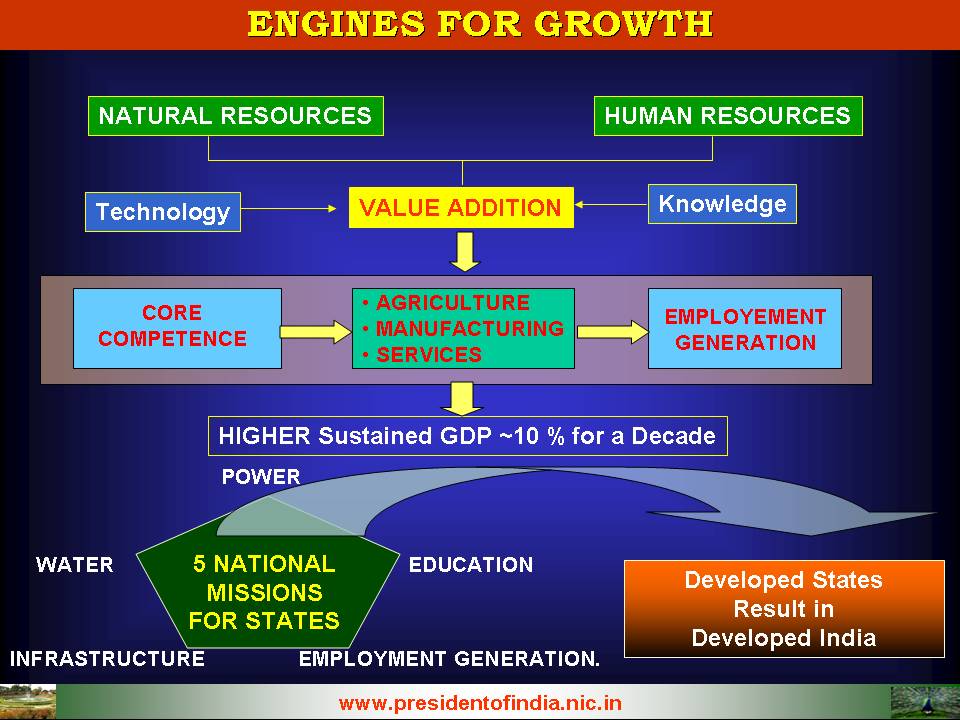
With these aspects, we have already laid down the road map. The priority for the government is to convert the road map into various missions. While converting the vision into different missions we seem to have many thoughts and variety of routes to reach the goal. This is where there is a need to have a coherent thinking among all the members of the society. All of them need to think that the nation is greater than an individual or an organization. There is a mindset among many that ?we cannot do it?. However in my experience with many departments in the country and the observations of the results of some of them in the mission mode projects, I can assure you whenever we have decided to achieve certain goals with clear targets, we have always achieved it. I have seen this even in private and public sector industries - if they decide to take up tasks as a mission, they succeed. I would like to give some examples.
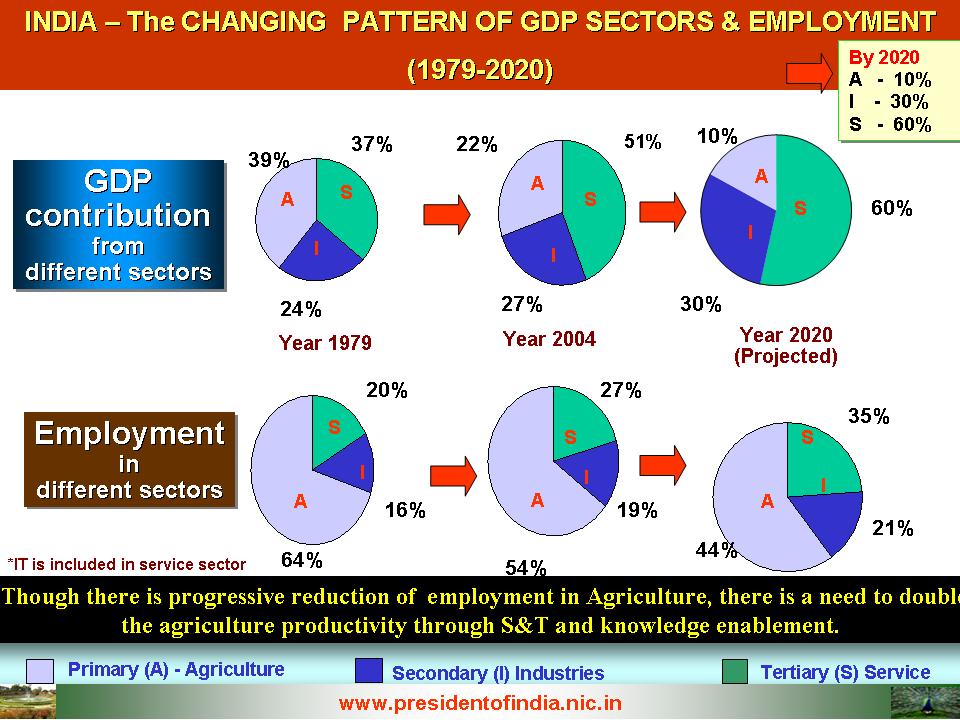

Our experiences in Mission mode
During 1960?s, I remember that India was in a state of ship to mouth existence in food. If the American ships did not bring wheat, there will be a famine in India. But there were two visionaries who worked together with the farming community and brought the first green revolution. They are the political thinker Shri. C. Subramaniam and the Agriculture scientist Dr. M.S. Swaminathan. Around the same time, Dr Varghese Kurien masterminded the white revolution. Today we produce two hundred million tonnes of food grains, which is not only sufficient for us but we can also export. Similarly, the white revolution resulted in placing India at the top of the world map of milk producers.
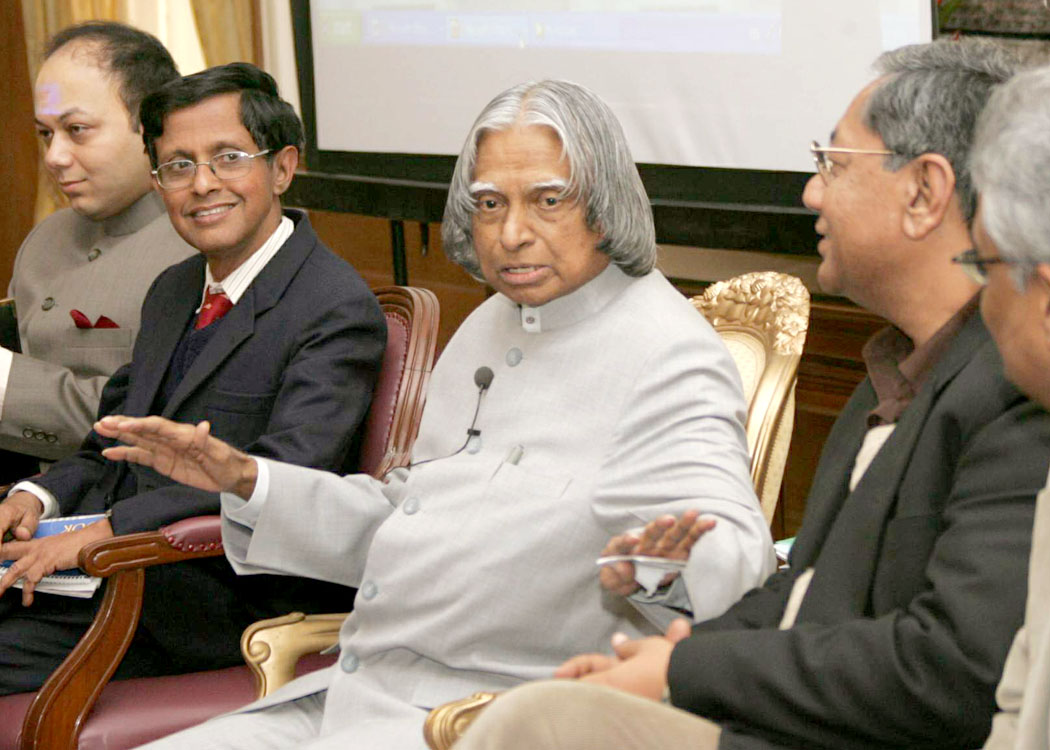
In India much innovation and creative thinking took place at various phases of our development. Dr. Vikram Sarabhai in 1960?s said that India should design and develop large satellite launch vehicle and put communication satellite and remote sensing satellite in geo-synchronous orbit and polar orbit respectively. This vision statement ignited hundreds of scientist, technologists and thousands of technicians. Today India is capable of building any type of satellite launch vehicles and satellites. Similarly the Vision of nuclear programme led to establishing series of nuclear power plants adding 3000 megawatt power to our electrical grid of 100,000 megawatt. There is a proposal to increase the nuclear power to 20,000 megawatt by 2020.
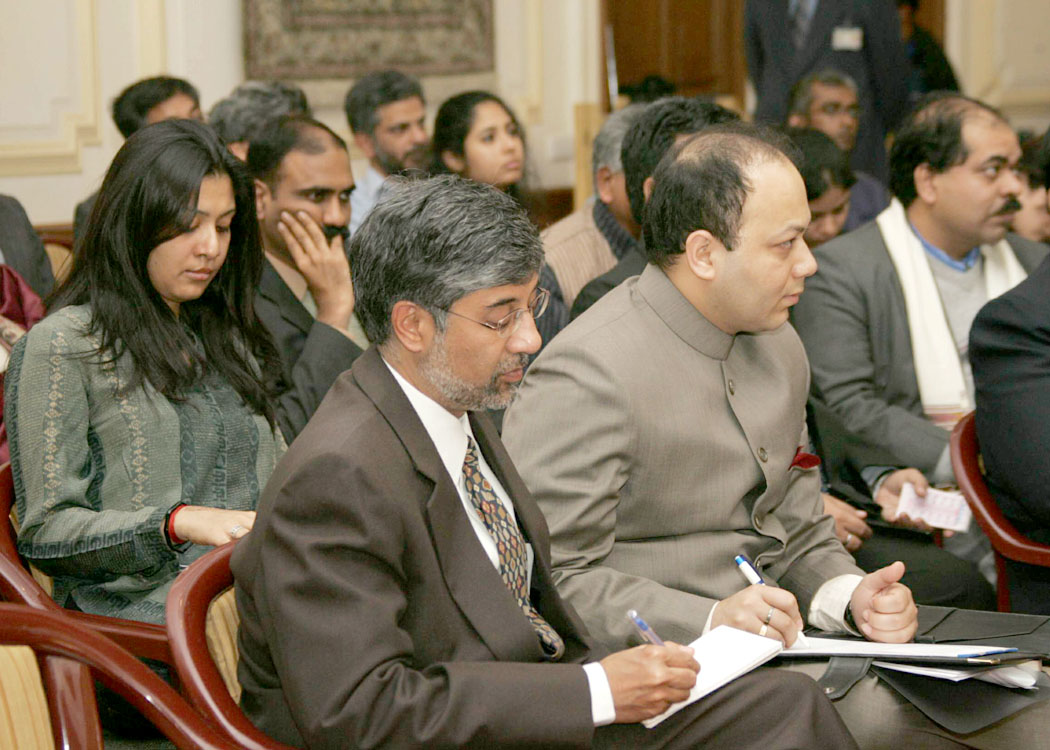
In the 80?s, India had a very low base in Information Technology. Some young entrepreneurs with their innovative and creative thoughts and within the difficult boundary conditions of India?s rules and regulations, demonstrated how IT enabled services can fetch export revenue. Subsequently, even Government had to bring out innovative and liberalized IT policies. Now, our young IT entrepreneurs are making export revenue of 15 billion dollars. This is expected to grow to more than 100 billion dollars by the year 2020. Similarly the Pharma industries are making a positive impact in the Indian economy. Our garment industry and our export of flowers and diamond are not far behind. Our auto-component and auto mobile industries have made remarkable breakthroughs. Our cement industry has great achievements in energy efficiency. Fly ash utilization which was just 3% in 1993 is now close to 25% after mission mode approach. It will further grow as fly ash has multiple applications.
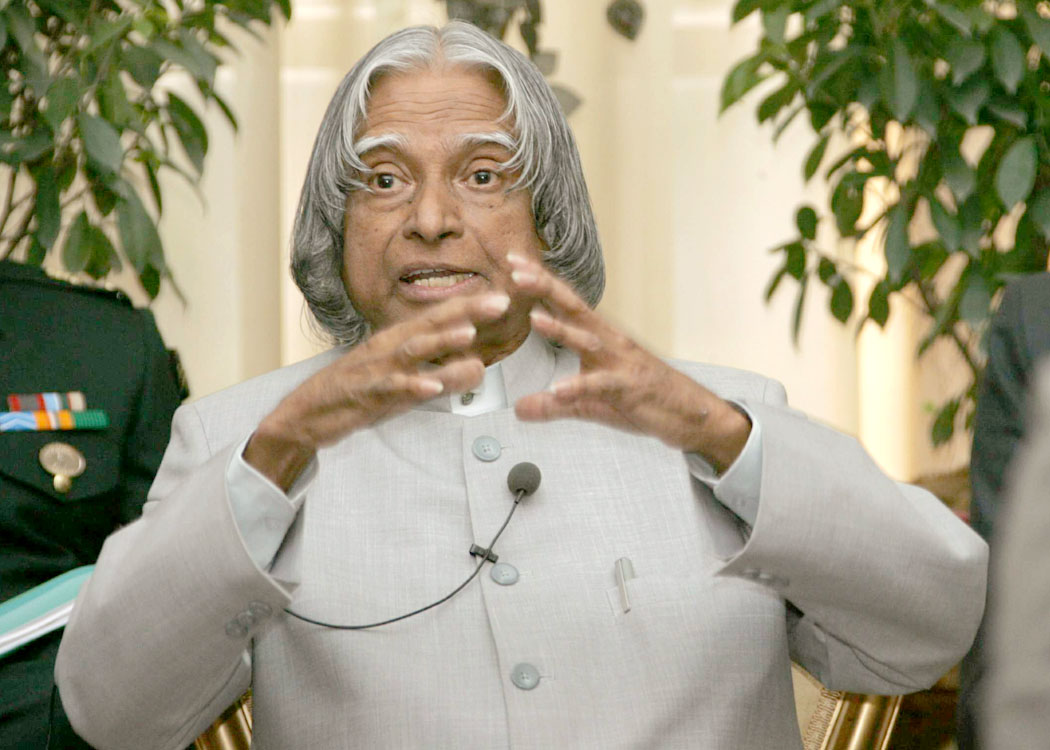
These successful missions give us the confidence that as a country we have the resources and the capability to achieve challenging missions, if only we decide to achieve it. Our development should not be in the pattern of ?following the West? like the US, Europe or Russia. We have to ensure that we achieve the development goals keeping our civilizational heritage intact. We have to ensure that the development brings harmony at home, order in the nation and peace in the world. For that righteousness is the basic requirement, which is to be promoted among all citizens of the country. Now I am reminded of the divine hymn.
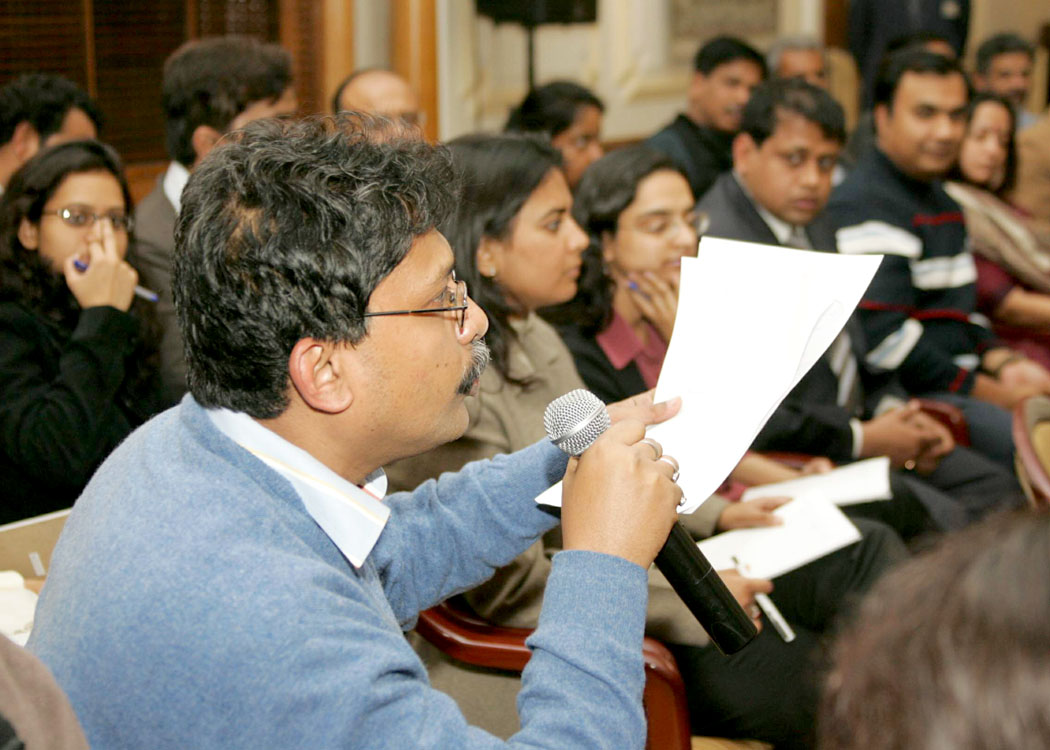

PURA (Providing Urban Amenities in Rural Areas)
Nearly 700 million people of India live in the rural areas in 600,000 villages. Connectivity of village complexes providing economic opportunities to all segments of people is an urgent need to bridge the rural-urban divide, generate employment and enhance rural prosperity. The essential needs of the villages today are water, power, road, sanitation, and healthcare, education and employment generation.
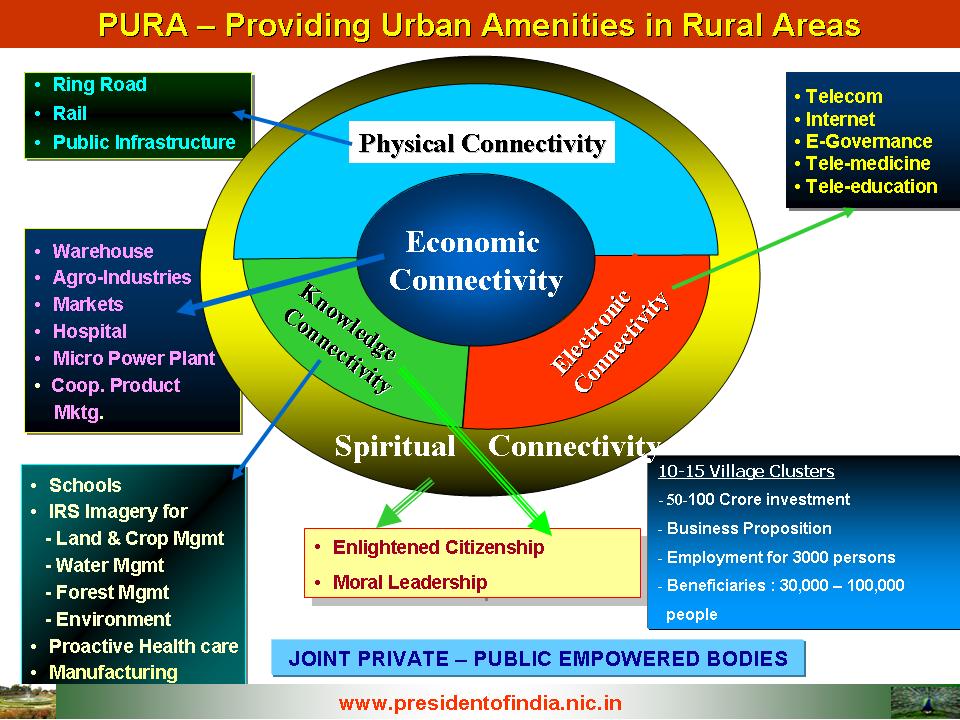
Essential Connectivities through PURA: The integrated methods, which will bring prosperity to rural India are: the physical connectivity of the village clusters through quality roads and transport; electronic connectivity through tele-communication with high bandwidth fiber optic cables reaching the rural areas from urban cities and through internet kiosks; knowledge connectivity through education, vocational training for farmers, artisans and craftsmen and entrepreneurship programmes; these three connectivities will lead to economic connectivity through starting of enterprises with the help of banks, micro credits and marketing the products.
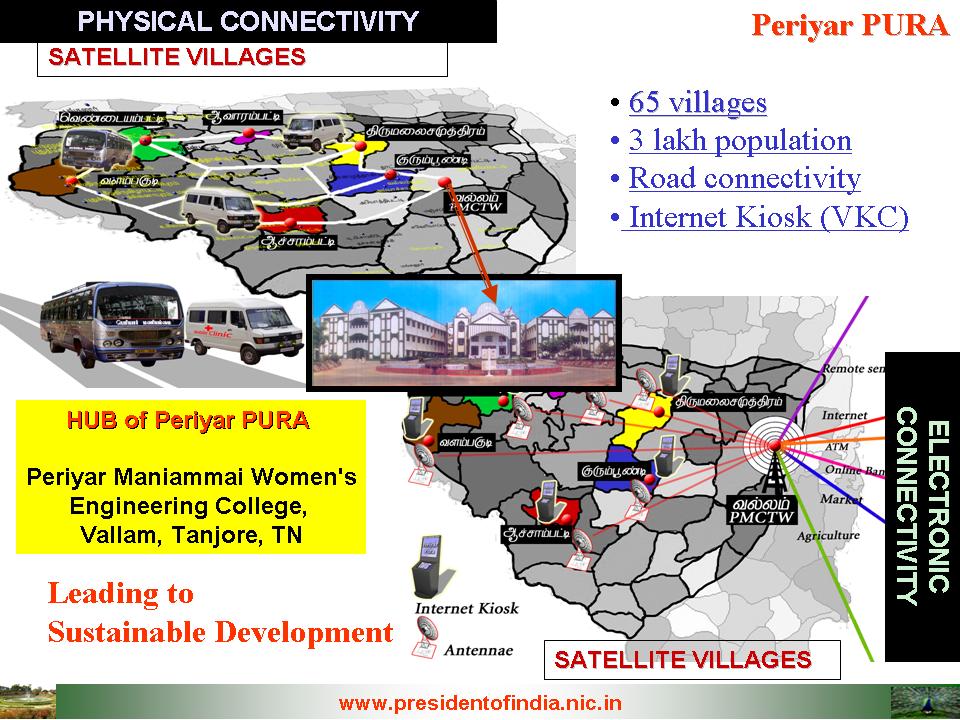
The promising areas for creating both rural and semi-urban employment as part of PURA, I have discussed in my talk to the nation delivered on 26th January 2005.
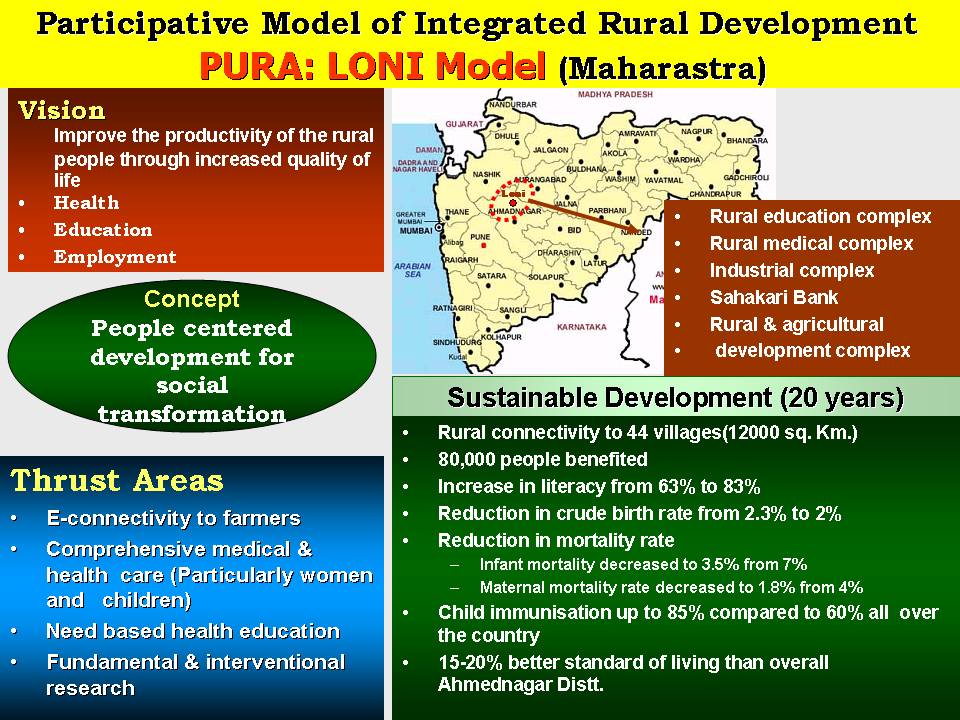

Entrepreneurship
All the missions which I have discussed will require generation of large number of entrepreneurs in the State through entrepreneurship programmes. The academic institutions in the country generate about 3 million graduates per year and the 10th class and 10+2 students will be around 7 millions. All of them will seek employment either within country or abroad. Now the school syllabus and university syllabus have to be integrated with entrepreneurship courses. The students at the end of the course should get a certificate or a diploma. This will enable students qualified in these schools and colleges, to have the confidence that they can start the small enterprises in agriculture, manufacturing or services sectors. Banks have to be entrepreneur friendly and should give them venture capital and support these young entrepreneurs and their creative ideas. This system will change the situation in the country by generating employment providers rather than employment seekers.
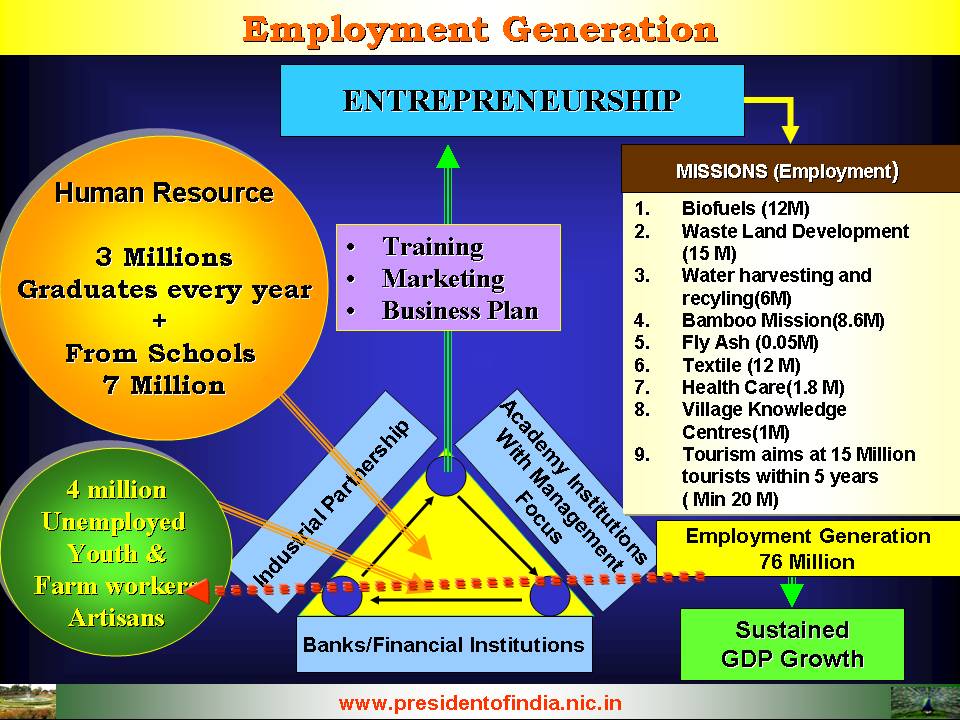

Conclusion
I used to say, quite often, that media has to become a partner in development of a state and the nation. I am indeed happy to know about the intensive public discussion on societal issues initiated by one of our print media. Tremendous amount of work has been done by the people of the State, the legislature, the state government and all the political parties after I gave a talk to the Members of Kerala Legislative Assembly in July 2005.
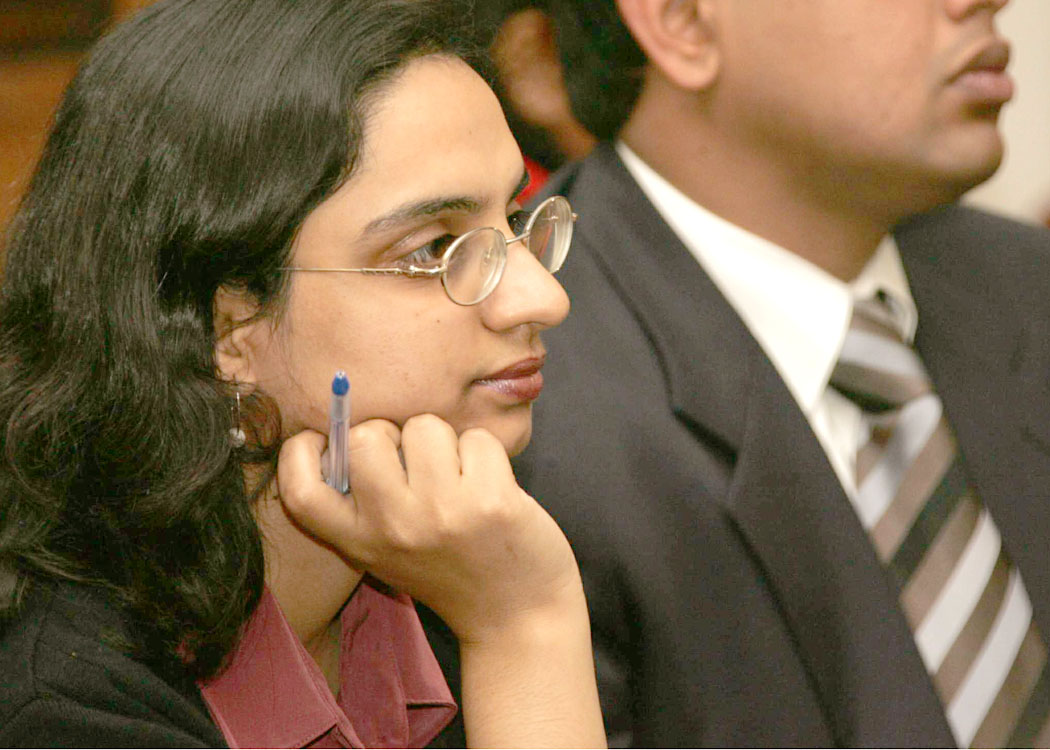
The media prepared one million copies translated version of my talk and circulated among the citizens of the State. Later they organized a series of Seminars on the development agenda in order to arrive at a consensus taking into account Kerala?s socio political realities. The aim of the seminar was to work out a strategy that would ensure its timely implementation. Based on this Seminar feed-back, a 10-Point agenda for each of the sectors was evolved and these were published for evaluation and response from citizens. Finally, after assimilating the responses a document titled ?Paths to Prosperity? was brought out for a discussion in Valedictory Seminar with Members drawn from Government, political parties, bureaucracy and experts. Meanwhile, the State Government had constituted Task Forces and prepared a document titled ?Missions for Kerala?s development and poverty alleviation ? Action Plan ? December 2005?. Thus you can see that the media has become a partner in the evolution of a consensus oriented development plan with an implementation strategy. I would request Times group to print at least one page in a week on topic ?National Development?. Here you should celebrate the successes which we have achieved in our rural areas.
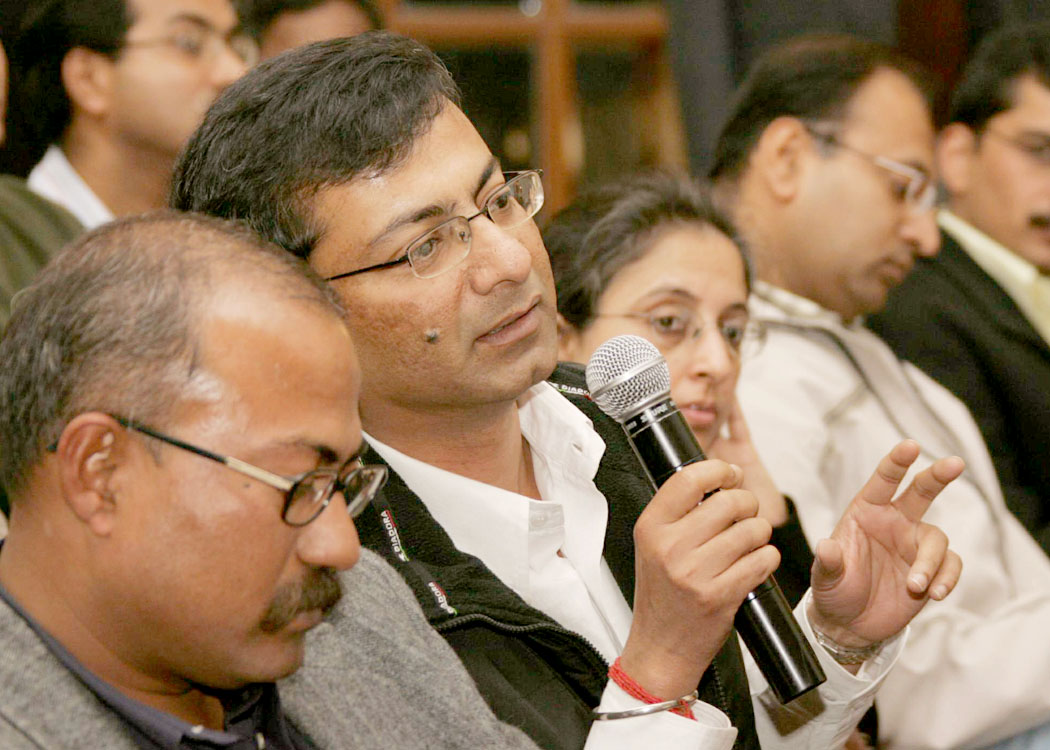
My best wishes to all of you for success in your mission of being an active partner in our national development.
May god bless you.
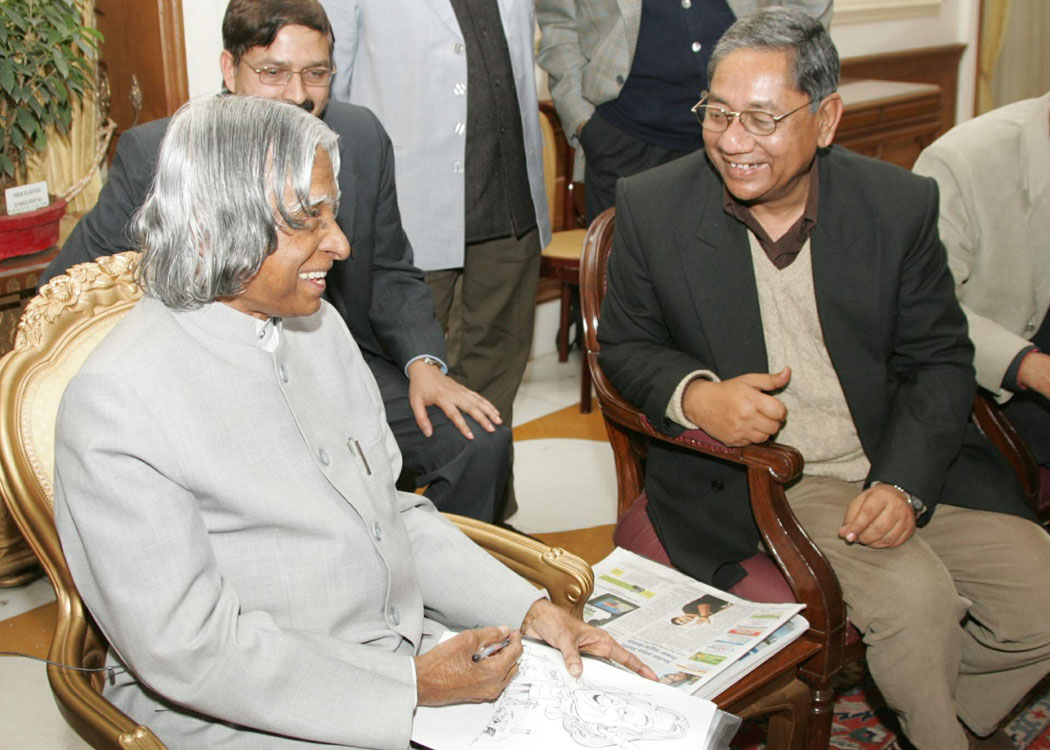

QUESTIONS ASKED AT INTERACTION WITH TIMES GROUP JOURNALISTS
1. You have spoken just now about rural development, but what about urban management, especially this year some of our cities have had tremendous problems?
Ans: One of the aims of PURA is to reduce urban migration. The Government has a plan and has been talking about a programme for urban renewal.
2. Where are we going to get spiritual connectivity? Today there is no role model of moral leadership?
Ans: A righteous mind starts from the home and the school. Our schools and colleges should included one class every week of moral science in which students are taught about great personalities. In this way they will get inspired. What we need are dedicated teachers.
3. We have the problem of caste system which persists leading to caste and communal tensions, what can we do to reduce this?
Ans: I can only tell you my experience in Kerala. I addressed the Kerala Assembly in June this year and was back again in Kerala this month. I found that Kerala has a very high Human Development Index and it has all the three major religions, yet they have no tensions on that account. The media has to do research and not just analysis, you should find out why there are no such problems in a state like Kerala.
4. Do you not think that 2020 is too ambitious a target for a Developed India, when we are not even able to put in place things for the Commonwealth Games?
Ans: Whenever I meet students I tell them that as a nation we have everything, except the I can do it spirit. After all the Green Revolution, the Space Programme and the Information Technology industry is a result of this spirit. You must have a dream.
5. You spoke about 30 percent political politics and 70 percent developmental politics. What do you think is the ratio today and how can we change it?
Ans: Today the ratio is reverse. I am trying to change it by marketing my agenda for a Developed India through a dialogue with the political class. The media also should market it.
6. Do you think that the benefits of development are percolating down to the poorest?
Ans: You know Transparency India rates Kerala with the highest transparency levels. The reason I feel is that Kerala has a high Human Development Index and the media is also vigilant. If there is any wrong doing from either side, the media will highlight this.
7. What are your views on Genetically Modified food, especially as you have said that we need to double our food production?
Ans: You see I visited Thodupuzha in Kerala. There organic farming is being taken up in a big way. So organic farming has to have a place. At the moment there is a debate on Genetically Modified food, once it becomes acceptable there should also be regulation.
8. What is your opinion on the present status of the judiciary?
Ans: I can only say that the judiciary should maintain a good name.
9. Should the media not just write on the good things happening, should it also not write about the bad things?
Ans: This is a beautiful question. Newspapers should once a week at least dedicate one full page to success stories in rural areas. It could be titled, " Success Stories of My Nation". I know your marketing strategy is bad news, and I cannot question it.
<<Back
|